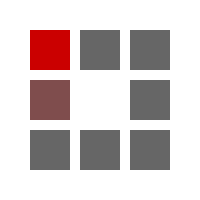| Series |
|---|
Publishers note: Team Mixing Light is happy to welcome our newest contributor Igor Riđanović to the team! He’s a Los Angeles-based finishing artist and colorist with a focus on theatrical trailers. Igor is an expert in Resolve scripting and automation and owns the software company, Meta Fide. We’re excited to share his first of many tutorials here on Mixing Light. Be sure to welcome Igor in the comments below. You can read Igor’s bio and find links to his work on his Author page.
Part 1: Setting Up Fusion and Color Pages
One of the real specialties in the universe of color grading and visual effects work is the skill and craft of retouching. If you push things too far, you end up in the realm of ‘uncanny valley’. But if you get it just right, then you become an actor’s (or CEO’s) best friend!
With the integration of Fusion into DaVinci Resolve, there are several workflows that allow colorists to explore visual effects level retouching that is otherwise hard to do. DaVinci Resolve 18 increases a colorist’s options to another level with the new Surface Tracker ResolveFX.
Digging into Surface Tracker for retouch work
The thing that has many Resolve users excited abou the Surface Tracker is that a mesh warper and multi-point tracker are built directly into this plugin. But – there’s a hitch. Currently, this plugin is limited to the Color Page.
For top-notch retouching what we want is to combine the Fusion and Color pages with this plugin – and this workflow is non-obvious.
In this Insight
This two-part Insight will give you a good understanding of Resolve 18’s Surface Tracker operations. In the process you will also learn some basic techniques used for beauty work – and how to feed the Surface Tracker into the Fusion page.
The Surface Tracker seamlessly combines a multiple-point tracker and a warper in one tool. It tracks a user-drawn polygon mesh. The tracking information is used to either warp an object to the tracked surface, or to stabilize the surface itself.
In this Insight, we use the Surface Tracker to:
- Stabilize an image
- Feed the stabilized image into Fusion
- Feed the Fusion result into the Color page, on top of the original, non-stabilized image
Note: At the time of publishing, the Surface Tracker is undocumented. It’s also in beta – which means that it may evolve. As the tracker development progresses and you encounter things that don’t match this tutorial please let us know in the comments section!
Learning Goals
- How to apply the Surface Tracker and use the Bounds and Mesh modes to track a moving face
- Setup the processing pipeline from Surface Tracker to Fusion (and back)
- Use Fusion for frequency separation retouching
- Apply the Fusion results back to the original image
Related Links
In Part 2 of this series, you’ll learn how to use this pipeline to retouch the actress’ skin using classic Frequency Separation techniques. If you want to do some homework before moving on, here are two resources to begin your Frequency Separation preparation:
- Frequency Separation: An Introduction – Dan Moran tackles this topic, “When working with skin it’s quite easy to make it look false and over worked”.
- Blackmagic Fusion: Frequency Separation Retouching by Simon Ubdell on YouTube – “How to perform the frequency separation retouching technique in Fusion, including building a custom 3D keyer and a custom Linear Light Blend Mode.”
Comments or Questions?
I cover a lot of ground in this Insight. If you have questions, comments, or thoughts, definitely use the comments below!
– Igor
Note: TheFootage used in this Insight is licensed via Creative Commons Stock courtesy: Wolfgang Langer (IG: darween2000), Yaroslav Shuraev (IG: yaroslav_shuraev)


